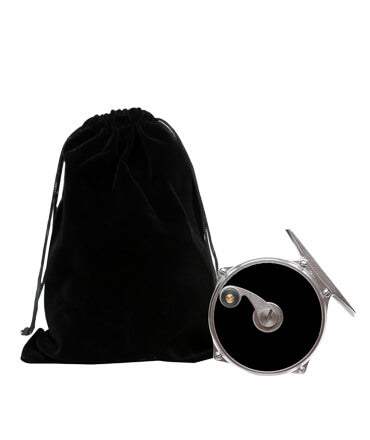Fly Reel: A Comprehensive Guide to Sizes, Choices, and Brands
Choosing the right fly fishing reel can significantly impact your experience on the water. Understanding fly reel sizes is crucial, as they influence casting ability and the types of fish you can target. I have often found that selecting the appropriate size for your rod and fishing conditions can lead to more successful outings.

When it comes to functionality, the choice between a manual and an automatic fly fishing reel boils down to personal preference and fishing style. I prefer manual reels for their simplicity and control, but many enthusiasts appreciate the convenience of automatic reels. Each type has its advantages, making it essential to consider how you plan to fish.
Finally, comparing different fly fishing reel brands can provide insights into quality and performance. I’ve spent time evaluating various brands, and my findings have helped refine my gear selection. By exploring these aspects, you can make an informed decision that enhances your fly fishing adventures.
Understanding Fly Fishing Reel Sizes
Selecting the right fly reel size is essential for successful fly fishing. It impacts both the performance of the reel and compatibility with your fly line. Additionally, the backing capacity should not be overlooked, as it plays a vital role in managing larger fish.
Reel Size and Fly Line Compatibility
Each fly reel is designed to accommodate specific fly line weights. The scale often follows a rating system, typically ranging from 1 to 12, corresponding to the line weight. For instance, a #3 reel works well with a 3-weight line, while a #7 reel pairs with a 7-weight line.
When choosing, I consider the species and conditions. Lighter lines and reels are ideal for smaller fish in calm waters, while heavier setups are necessary for larger species or tough conditions. The consistency of the reel size with the fly line ensures smooth casting and effective fish control.
Significance of Backing Capacity
Backing is the additional line that connects the fly line to the reel. It's crucial for providing extra length in case a fish makes a long run. Each reel's backing capacity varies, often indicated in yards, such as 100 yards or 200 yards.
Having adequate backing is essential, especially for targeting larger species like tarpon or salmon. I aim to pair my reel's capacity with the fishing environment and the size of the fish I expect to catch. A well-chosen backing ensures I remain prepared during those critical moments of a fight.
Selecting the Ideal Fly Fishing Reel
Choosing the right fly fishing reel is crucial for a successful fishing experience. Key factors include matching the reel to your fly rod, assessing the types of water you'll be fishing in, and considering your personal preferences in drag systems.
Matching Reel to Fly Rod
When selecting a fly reel, the first step is matching its size and weight to your fly rod. I typically choose a reel that complements the rod's weight rating. For instance, if I'm using a 5-weight rod, I opt for a reel designed for 5-weight lines.
Reel Size Guide:
| Rod Weight | Reel Size |
|---|---|
| 3 wt | 1-3 |
| 5 wt | 3-5 |
| 8 wt | 5-7 |
This ensures proper balance, allowing me to cast accurately and fight fish effectively. A mismatch can lead to casting difficulties and fatigue.
Assessing Water Type and Fishing Conditions
The type of water I plan to fish also influences my reel choice. For still water, I prefer a larger arbor reel, which aids in fast line retrieval and reduces memory. In contrast, for fast-moving streams, I lean towards lighter, smaller reels that offer excellent control.
I consider the following conditions:
- Still Water: Larger reels to handle line quickly.
- Fast Water: Smaller, lighter reels for agility.
- Saltwater: Reels with corrosion-resistant materials for durability.
Tailoring my reel to these conditions enhances my overall fishing experience and increases my chances of success.
Personal Preference in Drag System
The drag system is an essential aspect of fly reels. I evaluate drag types based on the fish species I’m targeting. For larger fish, I prefer a smooth, reliable drag system that can handle sudden runs.
Types of Drag Systems:
- Centrifugal Drag: Offers a consistent pull but can be less smooth.
- Disc Drag: Provides smooth pressure and better handling of fast runs.
- Manual Adjustability: Allows for quick adjustments during fights.
Selecting a drag system that feels comfortable to me during fights can make a significant difference in landing my catch. Each of these factors plays an important role in my overall effectiveness on the water.
Types of Fly Reels: Manual and Automatic
When considering fly reels, I often think about the fundamental differences between manual and automatic options. Each has unique characteristics that cater to different fishing styles and preferences.
Manual Fly Reels: A Traditional Choice
Manual fly reels are the classic choice for many anglers. They require the user to manage line retrieval and tension, allowing for a hands-on fishing experience. These reels usually offer adjustable drag, giving me control over how much resistance the fish feels while I reel in.
The simplicity of manual reels often makes them highly durable. Many experienced anglers appreciate the need for skill and technique, as it can enhance their fishing enjoyment. Popular models vary in size and material, offering options suitable for different fishing environments. I find that a well-maintained manual reel can last for years, making them a reliable choice.
Automatic Fly Reels: Convenience and Utility
Automatic fly reels provide a different level of convenience that I find appealing. With the push of a button or a simple trigger, these reels automatically retrieve the line, which is especially useful when I need to respond quickly to a catch. This functionality can enhance my efficiency while fishing.
These reels often come with features such as adjustable drag, making them user-friendly. They are built for durability, with materials designed to withstand harsh conditions. While I enjoy the traditional aspects of manual reels, the ease of use in automatic fly reels makes them a practical choice for long days on the water. Their ability to simplify line management can also improve my overall fishing experience.
Comparing Fly Fishing Reel Brands

When assessing fly fishing reel brands, I focus on their reputation, pricing, and unique features. Understanding these factors can significantly influence my buying decision.
Reputation and Quality Assessment
The reputation of a fly reel brand often reflects its commitment to quality. Brands like Orvis and Sage have built strong followings due to their durability and reliable drag systems. Simms is known for its comprehensive customer service and warranty policies.
I examine customer reviews and expert recommendations to gauge performance in real fishing situations. Brands claiming large arbor designs typically offer quick line retrieval, which I find essential for fighting fish. A well-regarded brand will consistently deliver high-quality materials, ensuring longevity and efficiency in various fishing conditions.
Price and Value Proposition
Price varies across brands, and I consider cost versus features before making a choice. For instance, Hardy reels can command a premium due to their craftsmanship. On the other hand, brands like Pflueger offer budget-friendly options with decent performance.
To evaluate value, I create a list comparing features and specifications alongside pricing. I prioritize reels with advanced drag systems and full cage designs, ensuring the ability to withstand intense fishing environments. A higher initial cost is justifiable if the longevity and performance are superior, saving me money in the long run.
Brand-Specific Features and Technologies
Each brand often has proprietary features that can sway my decision. For example, Abel reels are recognized for their aesthetic choices and customizations, while Redington focuses on practical, user-friendly designs.
Some brands incorporate innovative technologies in their reels, such as adjustable drag systems or lightweight materials that enhance performance. I appreciate brands that prioritize ease of use and maintenance, as these aspects can significantly impact my fishing experience.
When I explore these features, I keep an eye on the balance between technological advancement and the simplicity of operation, ensuring I get the best tool for my fishing adventures.











